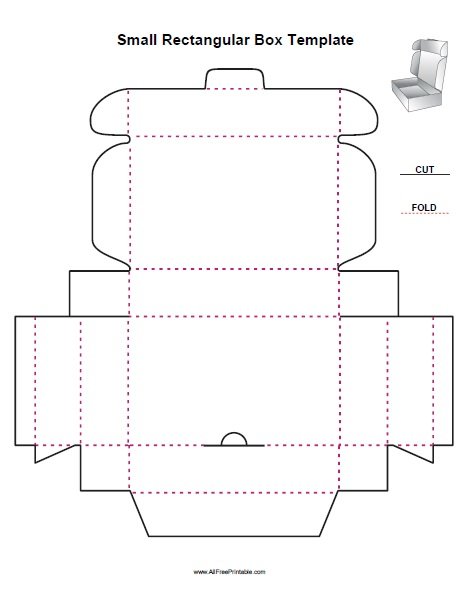Asian Ideas are a rich and diverse collection of concepts, practices, and inspirations that have been passed down through generations in various Asian cultures. These ideas encompass a wide range of areas including art, design, cuisine, fashion, philosophy, and spirituality. They offer a unique perspective and approach to life and have gained popularity and influence around the world. In this article, we will explore some fascinating Asian ideas that can inspire and enrich our lives.
- Wabi-Sabi: Finding Beauty in Imperfection
 Wabi-Sabi is a Japanese aesthetic principle that celebrates the beauty of imperfection, impermanence, and the natural cycle of growth and decay. It encourages us to appreciate the simplicity, modesty, and authenticity of things that are imperfect, incomplete, or weathered by time. This concept can be applied to various aspects of life, from design and art to embracing our own flaws and finding contentment in the present moment.
Wabi-Sabi is a Japanese aesthetic principle that celebrates the beauty of imperfection, impermanence, and the natural cycle of growth and decay. It encourages us to appreciate the simplicity, modesty, and authenticity of things that are imperfect, incomplete, or weathered by time. This concept can be applied to various aspects of life, from design and art to embracing our own flaws and finding contentment in the present moment.
- Feng Shui: Balancing Energy in Your Environment
 Feng Shui is an ancient Chinese practice that focuses on arranging and harmonizing one’s living and working spaces to promote positive energy flow or “Qi.” By consciously arranging furniture, colors, and objects in a space, Feng Shui aims to create a balanced and harmonious environment that supports well-being, prosperity, and good fortune. It is believed that by aligning ourselves with the natural flow of energy, we can enhance various aspects of our lives.
Feng Shui is an ancient Chinese practice that focuses on arranging and harmonizing one’s living and working spaces to promote positive energy flow or “Qi.” By consciously arranging furniture, colors, and objects in a space, Feng Shui aims to create a balanced and harmonious environment that supports well-being, prosperity, and good fortune. It is believed that by aligning ourselves with the natural flow of energy, we can enhance various aspects of our lives.
- Zen Buddhism: Cultivating Inner Peace and Mindfulness
 Zen Buddhism, originating in China and later flourishing in Japan, is a branch of Buddhism that emphasizes direct experience, meditation, and mindfulness. It teaches us to be fully present in each moment, to let go of attachment and desires, and to find inner peace through self-discovery and acceptance. Zen practices, such as seated meditation (Zazen) and mindful walking (Kinhin), can help us cultivate a calm and clear mind amidst the demands and distractions of modern life.
Zen Buddhism, originating in China and later flourishing in Japan, is a branch of Buddhism that emphasizes direct experience, meditation, and mindfulness. It teaches us to be fully present in each moment, to let go of attachment and desires, and to find inner peace through self-discovery and acceptance. Zen practices, such as seated meditation (Zazen) and mindful walking (Kinhin), can help us cultivate a calm and clear mind amidst the demands and distractions of modern life.
- Origami: The Art of Paper Folding
 Origami is a traditional Japanese art form that involves folding paper into various shapes and figures without using scissors or glue. This delicate and intricate craft requires precision, patience, and creativity. Traditional origami designs include animals, flowers, and geometric shapes. Beyond being a form of artistic expression, origami can also be a meditative practice that promotes focus, concentration, and mindfulness.
Origami is a traditional Japanese art form that involves folding paper into various shapes and figures without using scissors or glue. This delicate and intricate craft requires precision, patience, and creativity. Traditional origami designs include animals, flowers, and geometric shapes. Beyond being a form of artistic expression, origami can also be a meditative practice that promotes focus, concentration, and mindfulness.
- Yin and Yang: Balancing Opposing Forces
 Yin and Yang are fundamental concepts in Chinese philosophy and represent the dualistic nature of the universe. Yin symbolizes feminine, passive, and dark qualities, while Yang represents masculine, active, and bright qualities. The two opposing forces are interconnected and interdependent, creating a dynamic harmony. The concept of Yin and Yang reminds us of the importance of balance and harmony in all aspects of life, from work and relationships to health and well-being.
Yin and Yang are fundamental concepts in Chinese philosophy and represent the dualistic nature of the universe. Yin symbolizes feminine, passive, and dark qualities, while Yang represents masculine, active, and bright qualities. The two opposing forces are interconnected and interdependent, creating a dynamic harmony. The concept of Yin and Yang reminds us of the importance of balance and harmony in all aspects of life, from work and relationships to health and well-being.
- Hanbok: The Traditional Korean Dress
 Hanbok is the traditional Korean dress characterized by vibrant colors, beautiful patterns, and flowing lines. It reflects the rich cultural heritage of Korea and has evolved over centuries. Hanbok is not only worn on special occasions such as weddings and festivals but is also celebrated as a symbol of Korean identity and national pride. The grace and elegance of Hanbok continue to inspire contemporary fashion designers, merging tradition with modern aesthetics.
Hanbok is the traditional Korean dress characterized by vibrant colors, beautiful patterns, and flowing lines. It reflects the rich cultural heritage of Korea and has evolved over centuries. Hanbok is not only worn on special occasions such as weddings and festivals but is also celebrated as a symbol of Korean identity and national pride. The grace and elegance of Hanbok continue to inspire contemporary fashion designers, merging tradition with modern aesthetics.
- Tea Ceremony: The Art of Hospitality and Tranquility
 The tea ceremony, known as “Sadō” or “Chadō” in Japan, is a ceremonial practice that epitomizes harmony, respect, and tranquility. It involves preparing and serving matcha, a powdered green tea, in a ceremonial manner. The tea ceremony is more than just a way of making and serving tea; it is a deeply spiritual and aesthetic experience. It encourages mindfulness, attention to detail, and appreciation for the beauty and impermanence of the moment.
The tea ceremony, known as “Sadō” or “Chadō” in Japan, is a ceremonial practice that epitomizes harmony, respect, and tranquility. It involves preparing and serving matcha, a powdered green tea, in a ceremonial manner. The tea ceremony is more than just a way of making and serving tea; it is a deeply spiritual and aesthetic experience. It encourages mindfulness, attention to detail, and appreciation for the beauty and impermanence of the moment.
- Ikebana: The Art of Japanese Flower Arrangement
 Ikebana, also known as Kado, is the Japanese art of flower arrangement. It emphasizes simplicity, asymmetry, and the natural beauty of flowers and plants. Ikebana arrangements are carefully composed, using minimal elements to create a harmonious and balanced design. Beyond aesthetics, Ikebana is regarded as a meditative practice that connects the artist with nature and cultivates a sense of appreciation for the transient beauty of life.
Ikebana, also known as Kado, is the Japanese art of flower arrangement. It emphasizes simplicity, asymmetry, and the natural beauty of flowers and plants. Ikebana arrangements are carefully composed, using minimal elements to create a harmonious and balanced design. Beyond aesthetics, Ikebana is regarded as a meditative practice that connects the artist with nature and cultivates a sense of appreciation for the transient beauty of life.
- Henna: The Art of Temporary Body Decoration
 Henna, or Mehndi, is a form of temporary body art that originated in the Indian subcontinent and became popular worldwide. It involves applying intricate designs on the skin using a paste made from the powdered leaves of the henna plant. Henna art is commonly seen during weddings, festivals, and special occasions. It symbolizes beauty, celebration, and auspiciousness. The art of henna has evolved to incorporate various styles and patterns, reflecting the cultural diversity of different regions.
Henna, or Mehndi, is a form of temporary body art that originated in the Indian subcontinent and became popular worldwide. It involves applying intricate designs on the skin using a paste made from the powdered leaves of the henna plant. Henna art is commonly seen during weddings, festivals, and special occasions. It symbolizes beauty, celebration, and auspiciousness. The art of henna has evolved to incorporate various styles and patterns, reflecting the cultural diversity of different regions.
- Calligraphy: The Art of Beautiful Writing
 Calligraphy, known as Shūfǎ in Chinese, is the art of writing characters with a brush or pen. It is highly regarded in Asian cultures, particularly in China, Japan, and Korea. Calligraphy is considered a form of visual art that combines aesthetics, skill, and personal expression. Each stroke of the brush carries meaning, rhythm, and balance. Calligraphy is not limited to handwriting; it can also be found in various forms of artistic expression, such as ink paintings and inscriptions on seals.
Calligraphy, known as Shūfǎ in Chinese, is the art of writing characters with a brush or pen. It is highly regarded in Asian cultures, particularly in China, Japan, and Korea. Calligraphy is considered a form of visual art that combines aesthetics, skill, and personal expression. Each stroke of the brush carries meaning, rhythm, and balance. Calligraphy is not limited to handwriting; it can also be found in various forms of artistic expression, such as ink paintings and inscriptions on seals.
- Bonsai: Miniature Trees, Majestic Beauty
 Bonsai, originating from China and later refined by the Japanese, is the art of growing and pruning miniature trees in containers. Bonsai trees are meticulously cultivated to resemble the shape and scale of full-sized trees, evoking a sense of age, tranquility, and beauty. Bonsai cultivation requires patience, observation, and an understanding of horticulture. The art of bonsai reflects the appreciation for nature’s beauty and the delicate balance between man and nature.
Bonsai, originating from China and later refined by the Japanese, is the art of growing and pruning miniature trees in containers. Bonsai trees are meticulously cultivated to resemble the shape and scale of full-sized trees, evoking a sense of age, tranquility, and beauty. Bonsai cultivation requires patience, observation, and an understanding of horticulture. The art of bonsai reflects the appreciation for nature’s beauty and the delicate balance between man and nature.
- Ayurveda: Holistic Wellness from Ancient India
 Ayurveda, originated in ancient India, is a holistic system of medicine and wellness that focuses on the balance between mind, body, and spirit. It emphasizes the use of natural remedies, dietary changes, herbal treatments, and lifestyle practices to maintain and restore health. Ayurveda recognizes the uniqueness of each individual and provides personalized recommendations for diet, exercise, and daily routines. By embracing Ayurvedic principles, one can achieve optimal well-being and harmonious living.
Ayurveda, originated in ancient India, is a holistic system of medicine and wellness that focuses on the balance between mind, body, and spirit. It emphasizes the use of natural remedies, dietary changes, herbal treatments, and lifestyle practices to maintain and restore health. Ayurveda recognizes the uniqueness of each individual and provides personalized recommendations for diet, exercise, and daily routines. By embracing Ayurvedic principles, one can achieve optimal well-being and harmonious living.
- Kintsugi: Embracing Imperfections with Gold
 Kintsugi, or “golden joinery” in Japanese, is the art of repairing broken pottery with lacquer dusted or mixed with powdered gold, silver, or platinum. Instead of concealing the cracks and imperfections, Kintsugi highlights them, turning them into beautiful and unique features. This ancient technique embodies the idea of embracing imperfections and seeing them as part of the object’s history and beauty. Kintsugi also represents the philosophy of “wabi-sabi” and the acceptance of impermanence.
Kintsugi, or “golden joinery” in Japanese, is the art of repairing broken pottery with lacquer dusted or mixed with powdered gold, silver, or platinum. Instead of concealing the cracks and imperfections, Kintsugi highlights them, turning them into beautiful and unique features. This ancient technique embodies the idea of embracing imperfections and seeing them as part of the object’s history and beauty. Kintsugi also represents the philosophy of “wabi-sabi” and the acceptance of impermanence.
- Silk Road: A Historical Connection of Cultures
 The Silk Road was a network of trade routes that connected the East and West, fostering cultural exchange, commerce, and the spread of ideas. It facilitated the exchange of goods, technologies, arts, and religions between Asia, the Middle East, and Europe. The Silk Road played a significant role in shaping civilizations, promoting cultural diversity, and fueling economic growth. Today, the legacy of the Silk Road continues to inspire global cooperation, understanding, and appreciation of diverse cultures.
The Silk Road was a network of trade routes that connected the East and West, fostering cultural exchange, commerce, and the spread of ideas. It facilitated the exchange of goods, technologies, arts, and religions between Asia, the Middle East, and Europe. The Silk Road played a significant role in shaping civilizations, promoting cultural diversity, and fueling economic growth. Today, the legacy of the Silk Road continues to inspire global cooperation, understanding, and appreciation of diverse cultures.
- Hanami: Celebrating Cherry Blossom Season
 Hanami, meaning “flower viewing” in Japanese, refers to the traditional custom of enjoying the beauty of cherry blossoms (sakura) during the spring season. It is a time when friends and families gather in parks and gardens to have picnics, admire the blooming cherry trees, and celebrate the transience of life. Hanami represents the fleeting nature of beauty and serves as a reminder to cherish precious moments and appreciate the ephemeral nature of life.
Hanami, meaning “flower viewing” in Japanese, refers to the traditional custom of enjoying the beauty of cherry blossoms (sakura) during the spring season. It is a time when friends and families gather in parks and gardens to have picnics, admire the blooming cherry trees, and celebrate the transience of life. Hanami represents the fleeting nature of beauty and serves as a reminder to cherish precious moments and appreciate the ephemeral nature of life.
- Mantra: Sacred Sounds for Mind and Spirit
 In various Asian traditions, mantras are sacred sounds, syllables, or phrases that are repeated during meditation or as a form of devotion. Mantras are believed to have spiritual and transformative powers, creating a resonance that positively affects the mind, body, and spirit. The repetition of mantras helps to quiet the mind, enhance concentration, and connect with higher realms. Different mantras are associated with specific intentions, such as compassion, healing, or spiritual awakening.
In various Asian traditions, mantras are sacred sounds, syllables, or phrases that are repeated during meditation or as a form of devotion. Mantras are believed to have spiritual and transformative powers, creating a resonance that positively affects the mind, body, and spirit. The repetition of mantras helps to quiet the mind, enhance concentration, and connect with higher realms. Different mantras are associated with specific intentions, such as compassion, healing, or spiritual awakening.
- Batik: Indonesian Traditional Textile Art
 Batik is a traditional Indonesian textile art that involves decorating fabric with intricate patterns using a wax-resistant dyeing technique. The process of creating batik involves hand-drawing or stamping motifs on the fabric with hot wax, which acts as a resist. The fabric is then dyed, and the wax is removed to reveal the colorful patterns. Batik is not only a form of artistic expression but also a significant cultural symbol in Indonesia, representing heritage, identity, and craftsmanship.
Batik is a traditional Indonesian textile art that involves decorating fabric with intricate patterns using a wax-resistant dyeing technique. The process of creating batik involves hand-drawing or stamping motifs on the fabric with hot wax, which acts as a resist. The fabric is then dyed, and the wax is removed to reveal the colorful patterns. Batik is not only a form of artistic expression but also a significant cultural symbol in Indonesia, representing heritage, identity, and craftsmanship.
- Qigong: Cultivating Vital Energy and Healing
 Qigong, pronounced “chee-gong,” is a Chinese practice that combines movement, breath control, and meditation to cultivate and balance vital energy or “Qi.” It is considered a form of exercise, meditation, and self-healing that promotes physical, mental, and spiritual well-being. Qigong exercises can be gentle and flowing or dynamic and challenging, depending on the specific style. Regular practice of Qigong helps to improve flexibility, strength, relaxation, and overall vitality.
Qigong, pronounced “chee-gong,” is a Chinese practice that combines movement, breath control, and meditation to cultivate and balance vital energy or “Qi.” It is considered a form of exercise, meditation, and self-healing that promotes physical, mental, and spiritual well-being. Qigong exercises can be gentle and flowing or dynamic and challenging, depending on the specific style. Regular practice of Qigong helps to improve flexibility, strength, relaxation, and overall vitality.
- Hangeul: The Korean Alphabet
 Hangeul is the native alphabet of the
Hangeul is the native alphabet of the